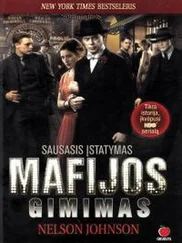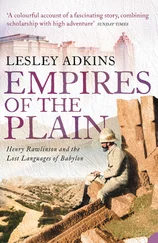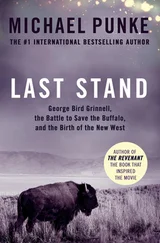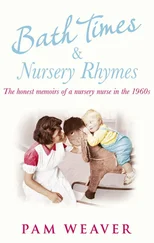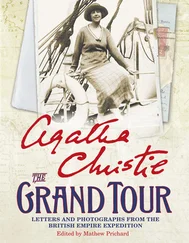Nelson Johnson - Boardwalk Empire - The Birth, High Times, and Corruption of Atlantic City
Здесь есть возможность читать онлайн «Nelson Johnson - Boardwalk Empire - The Birth, High Times, and Corruption of Atlantic City» весь текст электронной книги совершенно бесплатно (целиком полную версию без сокращений). В некоторых случаях можно слушать аудио, скачать через торрент в формате fb2 и присутствует краткое содержание. Жанр: Старинная литература, на английском языке. Описание произведения, (предисловие) а так же отзывы посетителей доступны на портале библиотеки ЛибКат.
- Название:Boardwalk Empire: The Birth, High Times, and Corruption of Atlantic City
- Автор:
- Жанр:
- Год:неизвестен
- ISBN:нет данных
- Рейтинг книги:5 / 5. Голосов: 1
-
Избранное:Добавить в избранное
- Отзывы:
-
Ваша оценка:
- 100
- 1
- 2
- 3
- 4
- 5
Boardwalk Empire: The Birth, High Times, and Corruption of Atlantic City: краткое содержание, описание и аннотация
Предлагаем к чтению аннотацию, описание, краткое содержание или предисловие (зависит от того, что написал сам автор книги «Boardwalk Empire: The Birth, High Times, and Corruption of Atlantic City»). Если вы не нашли необходимую информацию о книге — напишите в комментариях, мы постараемся отыскать её.
Boardwalk Empire: The Birth, High Times, and Corruption of Atlantic City — читать онлайн бесплатно полную книгу (весь текст) целиком
Ниже представлен текст книги, разбитый по страницам. Система сохранения места последней прочитанной страницы, позволяет с удобством читать онлайн бесплатно книгу «Boardwalk Empire: The Birth, High Times, and Corruption of Atlantic City», без необходимости каждый раз заново искать на чём Вы остановились. Поставьте закладку, и сможете в любой момент перейти на страницу, на которой закончили чтение.
Интервал:
Закладка:
The prospect of a second railroad into Atlantic City divided the town. Jonathan Pitney had died six years earlier, but his dream of an exclusive watering hole persisted. Many didn’t want to see the type of development that Samuel Richards was encouraging, nor did they want to rub elbows with the working class of Philadelphia. A heated debate raged for months. Most of the residents were content with their island remaining a sleepy little beach village and wanted nothing to do with Philadelphia’s blue-collar tourists. But their opinions were irrelevant to Samuel Richards. As he had done 24 years earlier, Richards went to the state legislature and obtained another railroad charter.
The Philadelphia-Atlantic City Railway Company was chartered in March 1876. The directors of the Camden-Atlantic were bitter at the loss of their monopoly and put every possible obstacle in Richards’ path. When he began construction in April 1877—simultaneously from both ends—the Camden-Atlantic directors refused to allow the construction machinery to be transported over its tracks or its cars to be used for shipment of supplies. The Baldwin Locomotive Works was forced to send its construction engine by water, around Cape May and up the seacoast; railroad ties were brought in by ships from Baltimore.
Richards permitted nothing to stand in his way. He was determined to have his train running that summer. Construction was at a fever pitch, with crews of laborers working double shifts seven days a week. Fifty-four miles of railroad were completed in just 90 days. With the exception of rail lines built during a war, there had never been a railroad constructed at such speed.
The first train of the Philadelphia-Atlantic City Railway Company arrived in the resort on July 7, 1877. Prior to Richards’ railroad, round-trip tickets on the Camden-Atlantic were $3, and one-way fares were $2. The train fares for the narrow gauge railroad were $1.50 and $1. The device, which packed Richards’ trains, was the “excursion.” Richards understood that the majority of the people visiting Atlantic City could only afford a day trip. His railroad exploited that reality and related businesses provided attractions for people of modest means who were only able to visit for the day. The development of a resort where people would stay overnight in hotels would come later.
Richards geared his new railroad to a class of customers who cared little that the cars they rode in were the dregs of the train yards. They didn’t mind that there were no windows, which meant they’d be a sooty mess by the time they reached the shore. Nor did they mind riding on seats made of wooden planks with cushions. The train may have jerked and creaked the entire trip over the iron rails, but that didn’t matter either. Excursion rates were $1 round trip, and to a majority of Richards’ customers the price was all that mattered. Richards’ new railroad was eventually sold to the Philadelphia and Reading Railroad Company in 1883 and converted to a standard gauge railroad line.
Despite its short life, the impact of the Philadelphia-Atlantic City Railway was enormous. It spurred development in a new part of the island and brought in hundreds of thousands of first-time visitors. Richards had unleashed Atlantic City’s potential as a resort for the masses. In time, new hotels went up, investment capital was attracted, and Atlantic City launched upon a growth period spanning more than 50 years. Business in every town with a railroad station was stimulated, particularly in lumber, glass, and agricultural products. New development sprang up along the train route and real estate speculation was rampant, with fortunes being made overnight.
More than a generation after its founding, Jonathan Pitney’s beach village was finally on its way to becoming a major resort.
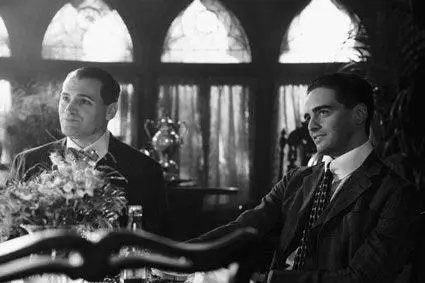 2
2 
The Grand Illusion
Thud! The huge net hit the floor of the pier and the crowd squealed with joy. Salt water splashed everywhere as hundreds of fish squirmed about. Presiding over it all was John Young, grinning from ear to ear, while the people crowded around him gaped in amazement. These landlubbers had never seen such creatures of the deep, and Young played his role as “The Captain” for all it was worth.
John Lake Young was the owner of Atlantic City’s largest amusement pier, “Young’s Million Dollar Pier,” and his twice-daily, deep-sea net hauls were famous, attracting thousands of wide-eyed tourists. Wearing knickers, an old sweater and cap, he was a wiry and weathered, red-faced man with sparkling blue eyes, reminiscent of a leprechaun. As he lowered the net to the floor of the pier, Young went into his routine of identifying the sea animals he had caught. It was an animated performance that mesmerized his customers. He was able to name as many as 48 species and bluffed on the ones he couldn’t. With a little luck, there might be a shark or a horseshoe crab, which always excited the crowd. They went away thrilled, likely to return on their next visit to Atlantic City.
Young was the resort’s answer to P.T. Barnum. He had his finger on the pulse of his times. The Captain knew his customers and gave them what they wanted. The people who came to town on the cut-rate excursions had simple tastes. They wanted a high time at a bargain price—something to tell the folks about when they got home.
Samuel Richards’ second train to Atlantic City ignited a war for the visitors’ dollars and local businessmen learned quickly that working-class tourists had money to spend, too. What they lacked in sophistication they made up for in numbers. Shortly after Richards’ narrow gauge railroad, a third train, the West Jersey and Atlantic Railroad, was organized purposely to transport “the medium and poorer classes.” The fare was “the astonishing sum of $.50 each—less than hack fare from Market Street, Philadelphia, to the Park.”
Travel to Atlantic City, especially on the weekends, increased dramatically. Competition among the railroads for the excursion ticket buyer guaranteed a large volume of working-class patrons, most of whom came only for the day. While there were families and single people who came to town for week-long vacations, the weekends were vital to a profitable season. Success, and oftentimes survival, of many resort businesses hinged on 12 to 13 weekends, with Sunday being the day everyone anticipated. The six-day workweek of most visitors forced them to squeeze every bit of pleasure they could into their one day off. The result was that “the crowds in the city were so large at times, especially over Sunday, as to nearly exhaust the supply of meat, milk, bread, and provisions in stock.”
In the early years following the second railroad, weekend tourists were entertained in excursion houses. These large open-air structures were built at the end of the railroad tracks entering the city. They were more than a reception point. Excursion houses generally included an entertainment pavilion with vaudeville acts, a dining hall, which sold food and provided space for visitors who brought their own, and an amusement park for the children. The West Jersey Railroad excursion house was known for its affordable all-you-can-eat meals, including fish, chicken, roast meats, vegetables, pies, pudding, ice cream, tea, and coffee. It also provided free music and dancing in its ballroom, a bar, a bowling alley, and a poolroom. Bathing suits and lockers were available, too, at a daily rental of 25 cents. Most excursion houses admitted customers at 5 or 10 cents apiece, aiming at high-turnover, low-cost entertainment. At the end of each season, most excursion houses offered their lowest priced outings for what were known as “Colored Excursion Days.” It was all made possible by affordable train fare.
Читать дальшеИнтервал:
Закладка:
Похожие книги на «Boardwalk Empire: The Birth, High Times, and Corruption of Atlantic City»
Представляем Вашему вниманию похожие книги на «Boardwalk Empire: The Birth, High Times, and Corruption of Atlantic City» списком для выбора. Мы отобрали схожую по названию и смыслу литературу в надежде предоставить читателям больше вариантов отыскать новые, интересные, ещё непрочитанные произведения.
Обсуждение, отзывы о книге «Boardwalk Empire: The Birth, High Times, and Corruption of Atlantic City» и просто собственные мнения читателей. Оставьте ваши комментарии, напишите, что Вы думаете о произведении, его смысле или главных героях. Укажите что конкретно понравилось, а что нет, и почему Вы так считаете.

